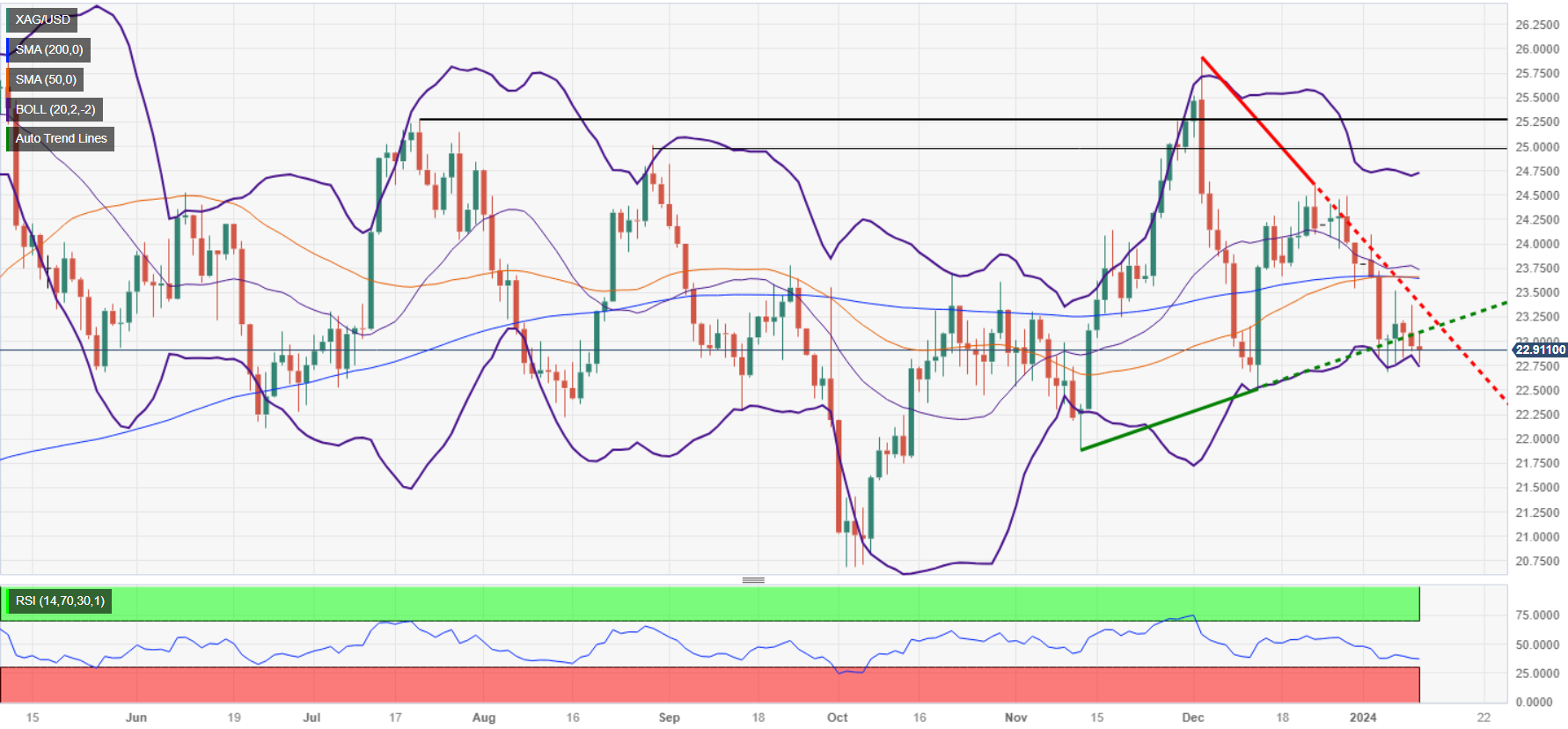Silver Price Analysis: XAG/USD dips on rising US bond yields as technicals shift bearish
- Silver's decline influenced by high US bond yields, impacting the metal's trading direction.
- Technical analysis indicates a sideways yet slightly bearish trend, with key support levels in focus.
- For a potential upward shift, Silver needs to reclaim $23.00 and surpass the 100-DMA at $23.28.
Silver price slumps late in the North American session as high US Treasury bond yields hit precious metals prices across the board. At the time of writing, XAG/USD trades at $22.70 a troy ounce, down 0.24%.
XAG/USD’s daily chart shows the non-yielding metal is trading sideways though slightly tilted to the downside. This is because Silver dropped below the 100-day moving average (DMA) on January 3. Since then, the 100-DMA remains a key resistance level respected by buyers, exacerbating Silver’s fall below $23.00.
That said, the path of least resistance is to the downside. Silver’s first support would be the January 4 low of $22.69, followed by the December 13 swing low of $22.51. Once those two levels are cleared, the next demand area would be $22.00.
Buyers must reclaim the $23.00 figure for a bullish resumption, followed by the 100-DMA at $23.28. A breach of the latter will expose the confluence of the 50 and 200-DMAs around $23.62/65.
XAG/USD Price Action – Daily Chart

XAG/USD Technical Levels
